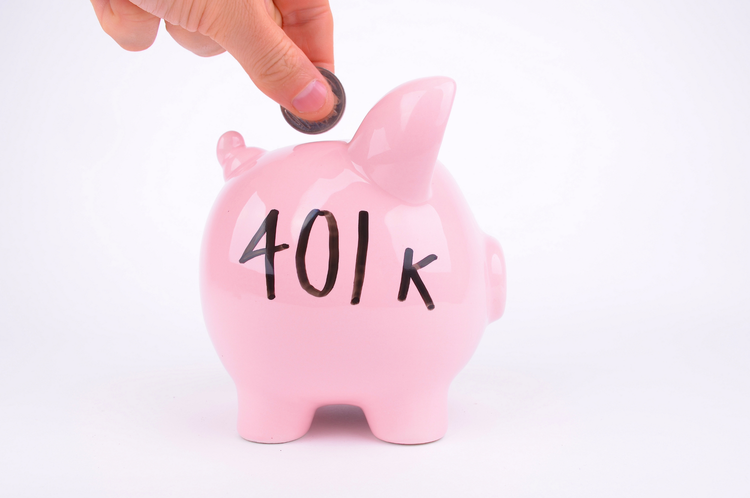Those planning retirement with a pension and Social Security supplemented by savings may want to consider how much spending money they have to work with, and whether or not it will cover necessary expenses.
When planning your retirement budget with unanswered questions about income streams, you may be left wondering how much Social Security you can expect, if your pension affects Social Security, or how taxes are going to work. Here's what you should know about retiring on your pension and Social Security.
How your Social Security benefits are calculated
When considering whether you qualify for social security and the amount that's entitled to you, several factors come into play. The first requirement is earning enough income over your career to gain 40 Social Security credits , which render you eligible to receive benefits.
Upon meeting that requirement, the Social Security Administration calculates the value of your benefit. Your average monthly earnings for the 35 years when your income was highest is used in the formula, adjusting numbers to account for the change in average wages across the overall economy during that time. The result is your primary insurance amount (PIA).
Depending on your age when claiming Social Security , the amount received may fluctuate above or below the PIA. Benefits are reduced when taking Social Security before reaching full retirement age. Alternatively, waiting past your retirement date might net you a greater benefit.
Working while you take Social Security can also influence the benefit amount. When under full retirement age, earning income above a set yearly limit lowers the benefit. On the other hand, earning income while receiving Social Security can increase your benefit if pay is high compared to previous years.
Benefits may also increase over time as the cost of living rises.
Benefits for spouses, former spouses, widows and widowers
When married with fewer than 40 credits, you may be eligible for a spousal benefit of up to half your spouse's amount at full retirement age. In the event you have enough credits but your earnings record based benefit is less than the spousal benefit, you may be entitled to your benefit plus an additional amount that will match the spousal benefit when added.
If you're divorced and you meet some conditions, you may be eligible for a spousal benefit that's up to half your former spouse's benefit at their full retirement age.
If your spouse has died, you may be eligible for a survivor's benefit as large as the full amount of your spouse's benefit if you've reached full retirement age, or a smaller amount if you're taking the benefit early.
Does pension affect Social Security?
Receiving a pension doesn't change the Social Security benefits you're eligible for if your employer withheld FICA taxes.
In the event that your employer didn't take FICA taxes out of your paycheck, then the pension received from that employer is considered a noncovered pension. Income from a noncovered pension can reduce your Social Security benefits.
How noncovered pensions can lower your benefits
If you have a noncovered pension but you still qualify for Social Security, the Windfall Elimination Provision (WEP) may apply to you. For this provision, the Social Security Administration uses a smaller percentage of your earnings in its formula for calculating the PIA, resulting in a smaller benefit. The WEP can cut your benefit by as much as half of your pension amount.
Featured Video
Articles you may find interesting:
- Corporate Employees: 8 Factors When Choosing a Mutual Fund
- Use of Escrow Accounts: Divorce
- Medicare Open Enrollment for Corporate Employees: Cost Changes in 2024!
- Stages of Retirement for Corporate Employees
- 7 Things to Consider Before Leaving Your Company
- How Are Workers Impacted by Inflation & Rising Interest Rates?
- Lump-Sum vs Annuity and Rising Interest Rates
- Internal Revenue Code Section 409A (Governing Nonqualified Deferred Compensation Plans)
- Corporate Employees: Do NOT Believe These 6 Retirement Myths!
- 401K, Social Security, Pension – How to Maximize Your Options
- Have You Looked at Your 401(k) Plan Recently?
- 11 Questions You Should Ask Yourself When Planning for Retirement
- Corporate Employees: 8 Factors When Choosing a Mutual Fund
- Use of Escrow Accounts: Divorce
- Medicare Open Enrollment for Corporate Employees: Cost Changes in 2024!
- Stages of Retirement for Corporate Employees
- 7 Things to Consider Before Leaving Your Company
- How Are Workers Impacted by Inflation & Rising Interest Rates?
- Lump-Sum vs Annuity and Rising Interest Rates
- Internal Revenue Code Section 409A (Governing Nonqualified Deferred Compensation Plans)
- Corporate Employees: Do NOT Believe These 6 Retirement Myths!
- 401K, Social Security, Pension – How to Maximize Your Options
- Have You Looked at Your 401(k) Plan Recently?
- 11 Questions You Should Ask Yourself When Planning for Retirement
When qualifying for a spousal benefit or survivor's benefit, a noncovered pension can reduce that benefit under the Government Pension Offset (GPO) . This provision cuts your benefit by two-thirds of your pension amount, and you can end up with a $0 benefit if your pension is large enough.
Exceptions to the WEP and GPO
If any of these situations apply to you, then the WEP won't reduce your benefit:
- You work for the federal government and were hired in 1984 or later.
- You work for a nonprofit that was exempt from Social Security on December 31, 1983, and meets some other conditions.
- You only have a railroad pension.
- Your earnings that weren't covered by FICA taxes were from before 1957.
- You have at least 30 years of substantial earnings on which FICA taxes were paid.
The GPO typically won't affect your benefit if any of these is true:
- You get a government pension that isn't based on your earnings.
- You're a government employee, you have a government pension from work that was covered by FICA taxes, and you meet one of a few other requirements.
- You work for the federal government, you switched from the Civil Service Retirement System to the Federal Employees' Retirement System after December 31, 1987, and you meet one of a few other requirements.
- You received or were eligible for a government pension before December 1982, and you qualified for spousal benefits under the rules in place in January 1977.
- You received or were eligible for a government pension before July 1, 1983, and you had one-half support from a spouse.
Does a pension count as earned income for Social Security?
The Social Security Administration doesn't view a pension as earned income . So you don't pay FICA taxes on your pension, and it doesn't add to your earnings record. Essentially, a pension can't add to your Social Security credits, and it doesn't enter into the PIA formula or affect your benefit amount.
When taking Social Security before full retirement age, a pension won't count toward earned income limit.
Looking up your Social Security benefits
It may prove beneficial to open an online account with the Social Security Administration to view a statement of your earnings history. The statement relays how much of your income was subject to FICA taxes for each year you've worked, letting you know if you have enough credits to be eligible for Social Security. Your full retirement age and estimates of what your benefit amount could be under different Social Security age scenarios is also shown.
The Social Security Administration offers a WEP calculator that shows how a noncovered pension may affect your Social Security benefit amount. You can enter your monthly income from the noncovered pension, your earnings from each year of your Social Security record, and the income you expect to earn in the future to calculate an estimate of your monthly benefit. A GPO calculator is also available and can help you establish how much your spouse's or survivor's benefits may be cut.
A financial advisor can help you get ready for retirement
With Social Security regulations being so complex, you may benefit from reaching out to a knowledgeable expert.
How does Chevron Phillips Chemical determine an employee's eligibility for retirement benefits, and what factors contribute to this determination? In your response, consider aspects such as age, years of service, and any specific milestones that the company factors into its retirement policy.
Eligibility for Retirement Benefits: Employees of Chevron Phillips Chemical become eligible for retirement benefits if they are regular employees scheduled to work at least 20 hours per week. Eligibility starts from the first day of employment. Retirement benefits accrue based on factors including age, years of service, and specific milestones like reaching Normal Retirement Age, which is age 65 or completion of three years of Vesting Service, whichever is later.
What are the various payment options available to employees when they retire from Chevron Phillips Chemical, and how do these options cater to different financial needs? Discuss the implications of choosing an annuity versus a lump-sum payment and the impact these decisions may have on an employee's financial planning during retirement.
Payment Options Available at Retirement: Chevron Phillips Chemical offers various payment options for retirement benefits, including lifetime monthly annuities and lump-sum payments. The choice between these options affects financial planning, as annuities provide a steady income while a lump-sum can be invested differently but comes with different tax implications and management responsibilities.
In the event of untimely death before retirement, what retirement benefits are available to the surviving spouse or beneficiaries of a Chevron Phillips Chemical employee? Explain the conditions under which these benefits are payable and how they align with the company’s policy objectives for retirement planning.
Benefits for Surviving Spouses or Beneficiaries: In the event of an employee's untimely death before retirement, the surviving spouse or beneficiaries are eligible for benefits under the terms of the plan. The company provides options for continued income for a spouse or other beneficiary, ensuring financial support aligns with the company’s policy objectives for family protection and retirement planning.
Chevron Phillips Chemical employees often face questions regarding early retirement. What criteria must be met to qualify for early retirement benefits, and how does the early retirement factor affect the overall benefit amount? Delve into the calculations and adjustments made for employees who opt for early retirement.
Early Retirement Criteria and Benefits: To qualify for early retirement, Chevron Phillips Chemical employees must be at least 55 years old with 10 years of Vesting Service or have completed 25 years of Vesting Service regardless of age. Early retirement benefits are adjusted based on the age at retirement and the distance from Normal Retirement Age, with specific reductions applied for each year benefits are taken before age 62.
As employees approach retirement age, understanding the process and necessary steps to receive retirement benefits is crucial. Can you outline the application process for claiming retirement benefits at Chevron Phillips Chemical, including key timelines and documentation required from employees?
Application Process for Retirement Benefits: The process for claiming retirement benefits involves contacting the Chevron Phillips Pension and Savings Service Center or accessing the Fidelity NetBenefits website. Key timelines include submitting an application 30 to 180 days before the desired retirement date, with required documentation such as employment verification and personal identification.
The retirement benefits at Chevron Phillips Chemical appear complex and multifaceted. How does the company ensure employees understand their retirement planning options, and what resources are available for employees to seek assistance or clarification about their retirement plans?
Understanding Retirement Planning Options: Chevron Phillips Chemical ensures that employees understand their retirement planning options through resources like the company’s benefits website, informational sessions, and one-on-one consultations with benefits advisors. This support helps employees make informed decisions about their retirement options.
How does the Chevron Phillips Chemical retirement plan integrate with Social Security benefits, and what considerations should employees bear in mind when planning their overall retirement income strategy? Discuss any supplemental benefits or adjustments available for employees who want to maximize their retirement income.
Integration with Social Security Benefits: The retirement plan is designed to complement Social Security benefits, which employees need to consider in their overall retirement income strategy. The plan may include supplemental benefits that adjust based on Social Security payouts, offering a coordinated approach to maximize retirement income.
Considering the varying forms of benefits accrued over years of service, how does Chevron Phillips Chemical calculate final retirement benefits? Focus on the role of eligible compensation and service time in determining the overall benefit, including specific formulas or examples that illustrate this processing.
Calculation of Final Retirement Benefits: Final retirement benefits at Chevron Phillips Chemical are calculated based on eligible compensation and years of Benefit Service. The plan includes formulas like the Stable Value Formula and the Traditional Retirement Plan Formula, which consider different elements of compensation and service duration.
What is the policy of Chevron Phillips Chemical regarding vesting service, and how does it impact employees' rights to their retirement benefits? Elaborate on the significance of vesting service in the broader context of employee retention and long-term planning.
Policy on Vesting Service: Vesting Service at Chevron Phillips Chemical is crucial for establishing an employee’s right to retirement benefits. Employees are vested after three years of service, which grants them a nonforfeitable right to benefits accrued up to that point, enhancing retention and long-term financial security.
For employees seeking additional information about their retirement plans or benefits, what is the most effective way to contact Chevron Phillips Chemical? Identify the channels through which employees can obtain further assistance and clarify whom they should reach out to for specific queries related to their retirement planning documentation.
Contact Channels for Further Information: Employees seeking more information about their retirement plans or needing specific assistance can contact the Chevron Phillips Pension and Savings Service Center. This center provides detailed support and access to personal benefit information, facilitating effective retirement planning.




-2.png?width=300&height=200&name=office-builing-main-lobby%20(52)-2.png)











-2.png)








